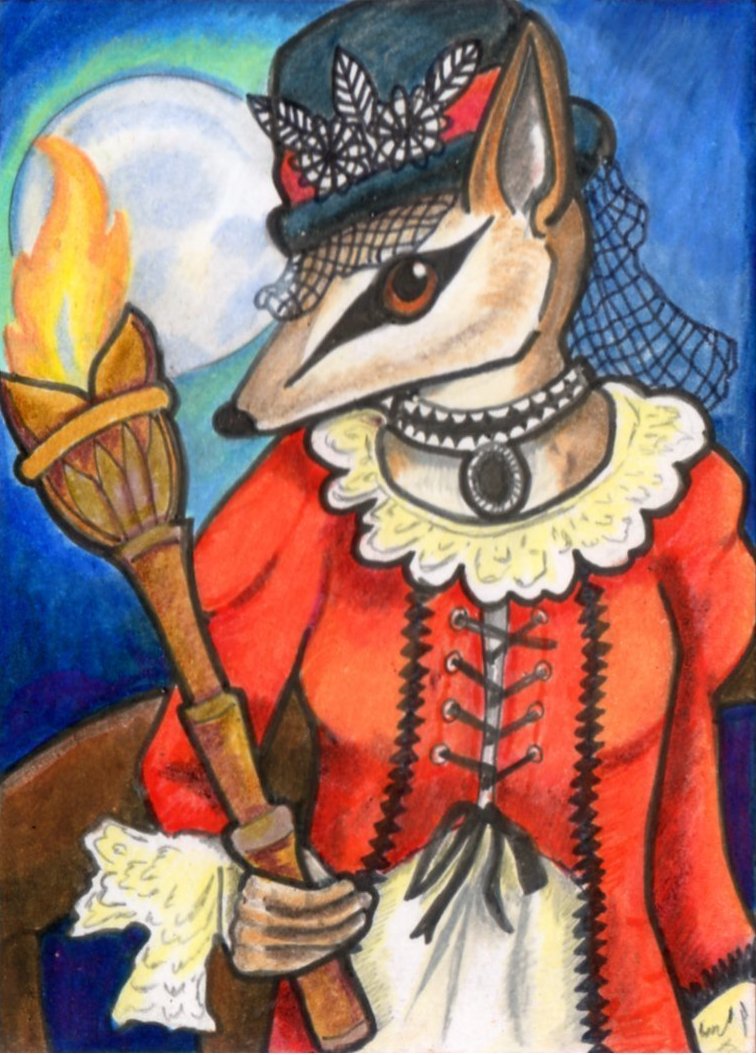It occurred to me a while ago, that I just don’t seem to write many human characters. Even my mostly-human characters: Niamh for example, have some inhuman traits. Indeed, the only time human characters ever show up in my story is either as a side character, or in my short stories. Even Dirk Lord-Rainer, who is a POV character for a portion of Midsummer Knight’s Quest, only plays a fairly minor role compared to Hemlock, the goblin.
So, why do I favour non-human characters?
First and foremost, I love animals, plus I have a zoology degree and I’m not afraid to use it to educate while I entertain.
Other reasons you might choose to write non-human protagonists:
- Challenge, to explore the world from a different perspective.
- Adds an extra quirk to a fairly mundane or traditional plot idea.
- Allegory or parable.
- FUN.
Non-human characters can range from realistic style animals (Incredible Journey, Watership Down), through to anthropomorphic animal-people (aka Furries). Generally speaking, I prefer to read animal-protagonist novels in which the animals behave much like their wild counterparts, but with increased insight and complex communication, or truly anthropomorphic ones, where the characters still show some of their natural animal traits. The movie, Zootopia, is an excellent example of this. However, shows like Arthur, where the characters are basically just children that happen to look like animals, don’t interest me.
Of course, “non-human” can also refer to werewolves, elves and many other near-human species.
For the purposes of this post, I’m going to deal predominantly with mostly-realistic animal characters (I’ll talk about writing Furries at a later date).
The first thing to do when writing an animal character is RESEARCH. I watch documentaries, read books, look up information on the internet. Remember, if you get one facet wrong there is someone out there who will notice and most zoologists aren’t shy about correcting errors! Of course, the more popular your animal is, the more is known about them, so not only will you have a plethora of information at your hands, there will also be more folks out there looking to correct any errors you might make. If you are making up the species, as I did with my goblins, then you can create as crazy an ecology as you like, but remember to keep it consistent!
Next you need a plot, and with that, CONFLICT. Is your character wild or domestic? If domestic, you could write a family drama from the animal’s perspective – The Last Family in England (aka The Labrador Pact) by Matt Haig is an excellent example of this. Murder mysteries seem popular too: why have several cats in the neighbourhood been found dead? Sit down and brainstorm a list of possible adventures that your domestic cat or dog could get up to. For both domestic and wild animals, there is the classic theme: trying to get home/find a new home, in which either the original habitat is destroyed (Animals of Farthing Wood) or the animal is taken from his/her home and must find her way back (Far From Home Cats). Survival in general is also a popular theme, (ie: Black Beauty and Bambi), but you will still need the plot to build to something – whether it be the battle for dominance to claim his position as head of the herd, or that final hurdle before being reunited with their owner or finding their forever home.
Even animal characters need PERSONALITY. They should always be a character first, animal second. They should have needs and wants, hopes and dreams – and forces (be it another character, or nature) acting against their achievement of these. Cliches are fairly common in animal-driven narratives: cats are sly and manipulative, dogs dependable and loyal, but it is fun to twist the stereotypes. After all, hyenas are generally portrayed as scheming and malicious thieves and rogues, but did you know that they do regularly hunt their own food (not just steal it), have a matriarchal society and form strong clan bonds, not entirely dissimilar to the oft-romantisied wolf?
Whether your animal character is predator or prey, pet or stray, it can be fun to delve into the world, look at it from a different perspective (don’t forget the senses!) and challenge yourself to write something different.





